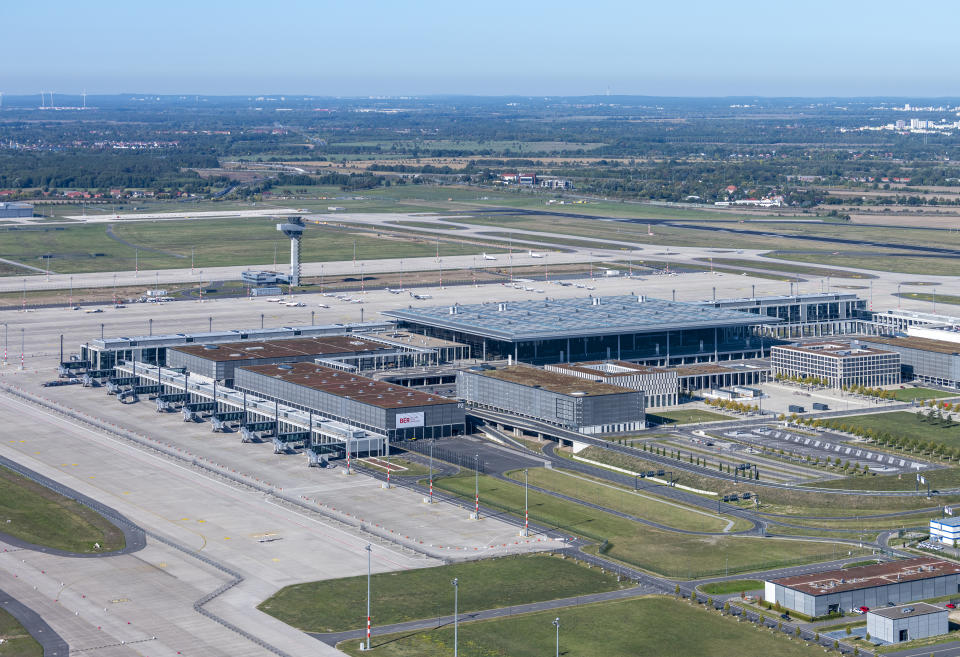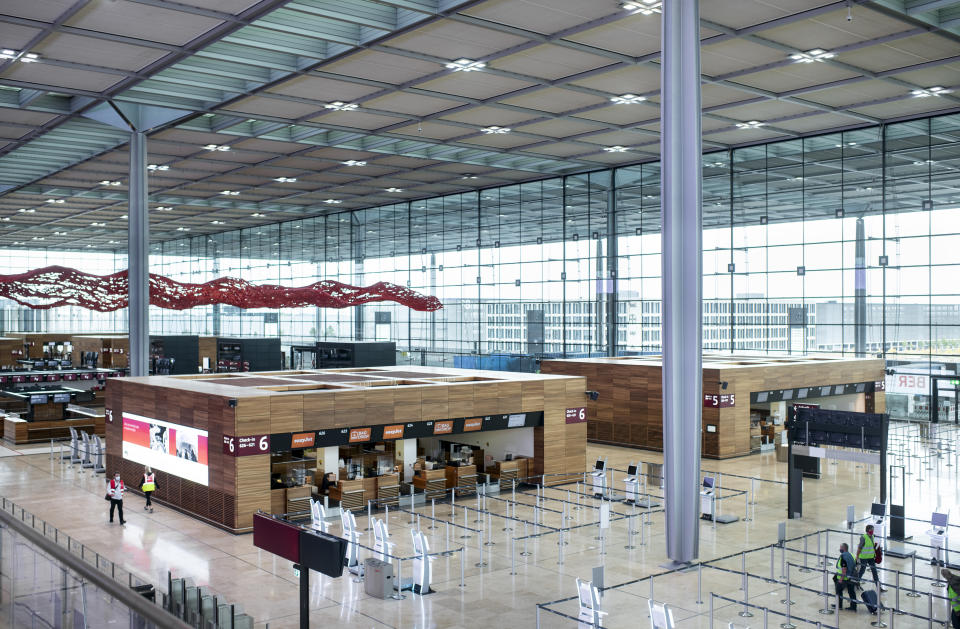Nine years late and billions over budget, Berlin’s international airport opens mid-pandemic

With the global travel industry mired in the worst crisis in decades, it is surely an inauspicious time to open a huge new international airport. However, the new Berlin-Brandenburg Willy Brandt Airport (BER), which opens this weekend, has battled through nearly a decade of setbacks to finally get to opening day, and it is not going to wait any longer.
On 31 October, the airport will mark its first day of operations with a subdued event. Two planes will land simultaneously, one Lufthansa (LHA.DE) and one EasyJet (EZJ.L), and the German capital will finally have an international airport.
Engelbert Lütke-Daldrup, who inherited a total mess when he took over as chief executive of operator Berlin-Brandenburger Flughafengesellschaft in 2017, said recently that the delayed airport had made Berlin and Germany “a laughing stock.”
However, asked why he decided to open in the middle of a pandemic, Lütke-Daldrup told reporters on a tour on Tuesday (27 October) it was about keeping a promise.
“We already fixed the opening date three years ago, and it is with some pride after what happened in the past, that we can keep this date and demonstrate reliability,” Lütke-Daldrup said.
He said that starting operations in the main terminal now made sense, “above all so that our guests have more space, because space is important under corona conditions… and the more space we can offer the better.”
Berlin’s beloved Tegel airport in the west of the city will now shut down, while Schönefeld airport will become Terminal 5 of BER.
There were already doubts that the new airport could handle the 36 million air passengers that Berlin processed last year, but air traffic will take a long time to recover to pre-coronavirus levels, and the airport will be able to handle over 40 million once all three terminals, including Schönefeld, are up and running.
A catalogue of disasters

BER has been beset by problems since the start, everything from allegations of corruption to technical and management changes, which meant the opening was postponed around six times since the original planned date of 2011.
In 2012, just a few weeks ahead of the opening, with invitations sent and chancellor Angela Merkel teed up to bless the new airport, they had to call a halt due to technical difficulties, including faulty fire-safety systems.
Promised opening dates in 2014, 2016 and 2017 blew by and costs spiralled from the original €2.7bn estimate to over €6bn.
The airport, which is jointly owned by the states of Brandenburg and Berlin and the federal government, suffered an endless litany of issues. Some were serious — the roof was too heavy for the building, the escalators were too short. Some were ridiculous — lights inside the terminal could not be turned off as no one could find the switches.
A sector in crisis
Lütke-Daldrup on Tuesday described his emotions in the run-up to the opening on Saturday as “ambivalent.” On one hand, he said he feels euphoria and pride for all the workers that have brought the airport online.
One the other hand, he feels sadness because of the havoc that COVID-19 has wrecked on the travel branch.
“For us, of course the corona pandemic is the biggest problem,” he added. “Not just for us, for the entire air traffic sector in Europe, and worldwide: In Europe at the moment, we are at 20% of the normal plane passengers, 30% of normal flights and of course our airline clients are not doing well.”
The pandemic has brought the global airline industry to its knees this year. Airlines everywhere are on life support, including German flag carrier Lufthansa which had to take a €9bn (£8.12bn, $10.5bn) state bailout, and Air France-KLM (AF.PA) which got a €10.4bn bailout from the French and Dutch governments.
READ MORE: German and Dutch governments put up billions to save airlines
The Airports Council International Europe trade body warned this week that 193 of Europe’s 740 commercial airports could go bust in the coming months “if passenger traffic does not start to recover by the year-end.”
“It’s a situation that worries us a lot,” Lütke-Daldrup said. “We will probably have to live for months with low air-traffic numbers, and that will only improve when we have a reliable vaccination situation in Europe.”

Handelsblatt reported recently that the Federal Transport Ministry said the airport operator will need more money to stay afloat from 2021 to 2024.
“As an airport, we need [financial] support, the same way airlines do,” the airport boss said on Tuesday. He said the operator notified the states and government that they would need support back in March, when the pandemic broke out in Germany, and “we are thankful that they have supported us.” The governments agreed to give it an extra €300m in October.
He pointed out that regardless how long the current crisis lasts, big airports are part of the core infrastructure and must stay open so that the country can function. Also, unlike airlines, who can ground fleets and furlough staff to ride out the crisis, airports need to be fully open if even one flight lands, meaning everything from staff to fire brigades, and security.
Already, the airport operator has paused investments for now, putting the airport expansion program on hold for two to three years, and imposing a hiring freeze. Terminal 2 has been built but won’t be put into operation while the pandemic situation lasts.

Lütke-Daldrup sees BER’s launch overall as a sign of a new beginning for the capital region.
“We are of the opinion that Germany, as the biggest economy in the middle of Europe, needs three international airports,” he said, adding that the goal is to turn Berlin airport into an attractive international hub, bringing more visitors to the region, and making money of those who pass through to transfer to onward flights.
The pandemic-induced lack of air traffic actually made it logistically easier to bring all of the machines and equipment across the city from Tegel to BER, as the move could happen in stages avoiding the enormous logistical challenge of moving all the essential airport gear the night before.
Unusually for a modern airport, this one’s interior — walls and check-in desks — is all clad in walnut with creamy sandstone floor tiles.
It has two runways, more than 120 parking places for airplanes, 13,000 car parking places, and its baggage system can sort 10,000 bags an hour.

 Yahoo Finance
Yahoo Finance 